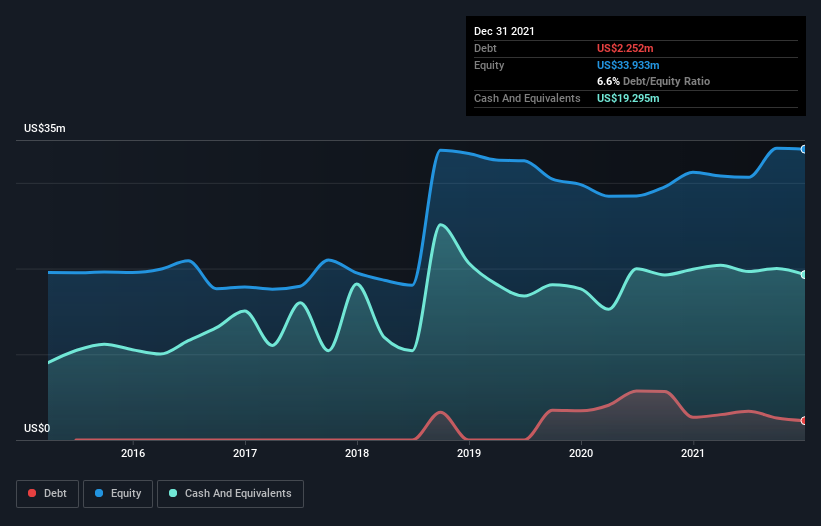CSP (NASDAQ:CSPI) Has Debt But No Earnings; Should You Worry?
Legendary fund manager Li Lu (who Charlie Munger backed) once said, 'The biggest investment risk is not the volatility of prices, but whether you will suffer a permanent loss of capital.' So it seems the smart money knows that debt - which is usually involved in bankruptcies - is a very important factor, when you assess how risky a company is. We note that CSP Inc. (NASDAQ:CSPI) does have debt on its balance sheet. But the real question is whether this debt is making the company risky.
When Is Debt Dangerous?
Debt and other liabilities become risky for a business when it cannot easily fulfill those obligations, either with free cash flow or by raising capital at an attractive price. If things get really bad, the lenders can take control of the business. However, a more usual (but still expensive) situation is where a company must dilute shareholders at a cheap share price simply to get debt under control. By replacing dilution, though, debt can be an extremely good tool for businesses that need capital to invest in growth at high rates of return. When we examine debt levels, we first consider both cash and debt levels, together.
See our latest analysis for CSP
What Is CSP's Net Debt?
You can click the graphic below for the historical numbers, but it shows that CSP had US$2.25m of debt in December 2021, down from US$2.64m, one year before. However, its balance sheet shows it holds US$19.3m in cash, so it actually has US$17.0m net cash.
How Strong Is CSP's Balance Sheet?
We can see from the most recent balance sheet that CSP had liabilities of US$17.6m falling due within a year, and liabilities of US$10.3m due beyond that. Offsetting this, it had US$19.3m in cash and US$23.4m in receivables that were due within 12 months. So it actually has US$14.9m more liquid assets than total liabilities.
This luscious liquidity implies that CSP's balance sheet is sturdy like a giant sequoia tree. With this in mind one could posit that its balance sheet means the company is able to handle some adversity. Succinctly put, CSP boasts net cash, so it's fair to say it does not have a heavy debt load! The balance sheet is clearly the area to focus on when you are analysing debt. But you can't view debt in total isolation; since CSP will need earnings to service that debt. So if you're keen to discover more about its earnings, it might be worth checking out this graph of its long term earnings trend.
In the last year CSP had a loss before interest and tax, and actually shrunk its revenue by 11%, to US$50m. We would much prefer see growth.
So How Risky Is CSP?
We have no doubt that loss making companies are, in general, riskier than profitable ones. And the fact is that over the last twelve months CSP lost money at the earnings before interest and tax (EBIT) line. And over the same period it saw negative free cash outflow of US$141k and booked a US$1.3m accounting loss. While this does make the company a bit risky, it's important to remember it has net cash of US$17.0m. That kitty means the company can keep spending for growth for at least two years, at current rates. Even though its balance sheet seems sufficiently liquid, debt always makes us a little nervous if a company doesn't produce free cash flow regularly. The balance sheet is clearly the area to focus on when you are analysing debt. However, not all investment risk resides within the balance sheet - far from it. To that end, you should learn about the 3 warning signs we've spotted with CSP (including 1 which is significant) .
When all is said and done, sometimes its easier to focus on companies that don't even need debt. Readers can access a list of growth stocks with zero net debt 100% free, right now.
Have feedback on this article? Concerned about the content? Get in touch with us directly. Alternatively, email editorial-team (at) simplywallst.com.
This article by Simply Wall St is general in nature. We provide commentary based on historical data and analyst forecasts only using an unbiased methodology and our articles are not intended to be financial advice. It does not constitute a recommendation to buy or sell any stock, and does not take account of your objectives, or your financial situation. We aim to bring you long-term focused analysis driven by fundamental data. Note that our analysis may not factor in the latest price-sensitive company announcements or qualitative material. Simply Wall St has no position in any stocks mentioned.

 Yahoo Finance
Yahoo Finance 